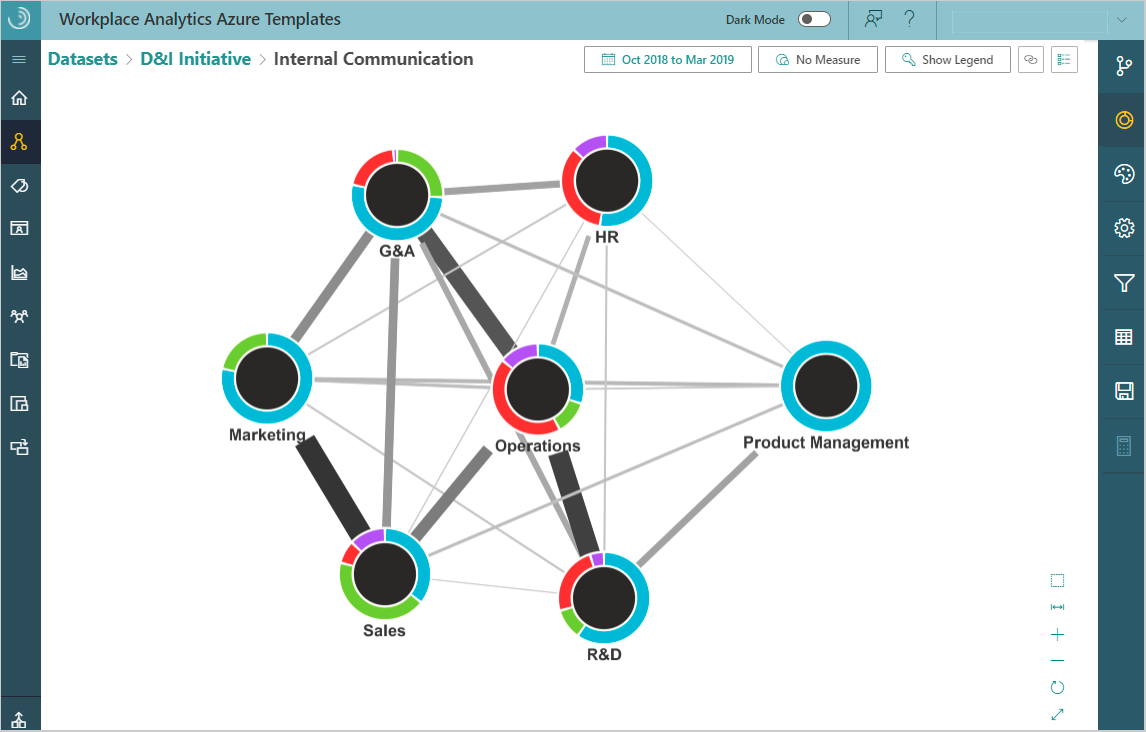Organizational Network Analysis Template
This template is only available as part of a Microsoft service engagement.
Workplace Analytics Azure Templates include the Organizational Network Analysis (ONA) Template that enables you to analyze communication in your organization in a very structured way. By visualizing connections within your organization and pinpointing internal and external collaboration patterns through data tables, you can understand and drive team productivity, innovation, and overall organizational change.
Workplace Analytics has a variety of measures to help you visualize and analyze formal and informal relationships within your organization. You can also analyze how your internal organization collaborates with external accounts or people outside your company. This ONA analysis can help you shape a business strategy that improves communication, making your business more effective and sustainable.
The ONA template includes the following options:
- Insights - Use to generate at-a-glance organization and insights about how people within the organization collaborate, how people within a group collaborate, or how two or more groups collaborate with each other within your company over time.
- Analysis - Use to create in-depth analysis about internal and external collaboration data that you can then view as graphs in the template.
The following is an example of within-group collaboration trends created through Insights for trends about the Sales - Central organization in Group insights, which is the group selected in the table. For details on how to create and view insights, see Insights.

The following is an example of an ONA graph created through Analysis for a new dataset about internal collaboration between groups defined by the FunctionType attribute. For details about how to use the graph tools, see Analysis.

The Dark mode feature is available for all of ONA. You can use it to change the background from white to dark, which enhances visual ergonomics by reducing eye strain, especially in low-light environments.